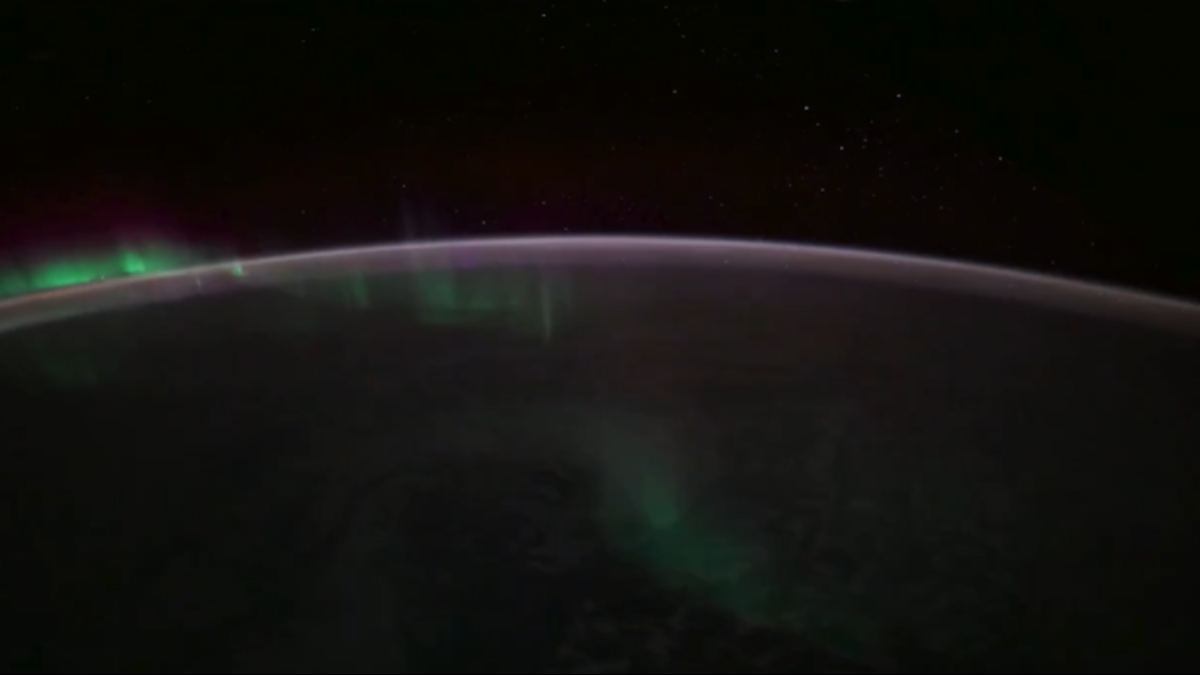NASA astronaut and commander of the Crew-10 mission Anne McClain has captured stunning visuals of auroras from the International Space Station (ISS). Taking to X, she shared the video presenting “very pink-hued” ribbons on light resulting from solar particles interacting with Earth’s magnetosphere.
McClain explained that seeing light-coloured auroras instead of the characteristic green made her think she chose the wrong lens or her camera settings were wrong. “Turns out, what I thought was white is actually light pink, and this led me down a path of learning,” she wrote on X.
So, when I took this aurora, at first I thought that my settings were not correct because the aurora appeared white. I thought maybe the ISO was off, or I picked the wrong lens. Turns out, what I thought was white is actually light pink, and this led me down a path of learning.… pic.twitter.com/Rk11DPdzoD
— COL Anne McClain (@AstroAnnimal) June 17, 2025
The colours of auroras in Earth’s polar regions depend on solar particles interacting with different atmospheric gases in the atmosphere – oxygen molecules excited by solar particles emit green colour where as nitrogen releases red at higher altitudes.
ALSO SEE: Internet Amazed By Intense Green Auroras Captured By NASA Astronaut In Space; ‘This Is Unreal’
“At lower altitudes during these intense storms, below 60 miles, auroras can appear purple or blue due to electrons hitting nitrogen molecules or pink when they hit slightly higher nitrogen around 60 miles. Auroras can appear other colors due to mixing of these phenomena,” McClain wrote saying she was amazed when she watched the colour variations in the video. “This one was very pink-hued!”
Notably, auroras are only caused after the Coronal Mass Ejections (CMEs) from the Sun; it’s when charged solar particles race toward Earth and hit the magnetosphere. The CME events increase during the Sun’s solar maximum phase in its 11-year cycle. The Sun has been fairly active since October 2024 when it officially entered the maximum phase. The most recent eruption was reported on June 18 when a giant sunspot released its strongest solar flare, which along with CMEs, are capable of damaging power grids and satellites.
ALSO SEE: NASA Astronaut Captures Majestic Auroras Over North America From ISS; ‘Wasn’t Expecting It’
(Image: X/@AstroAnnimal)
